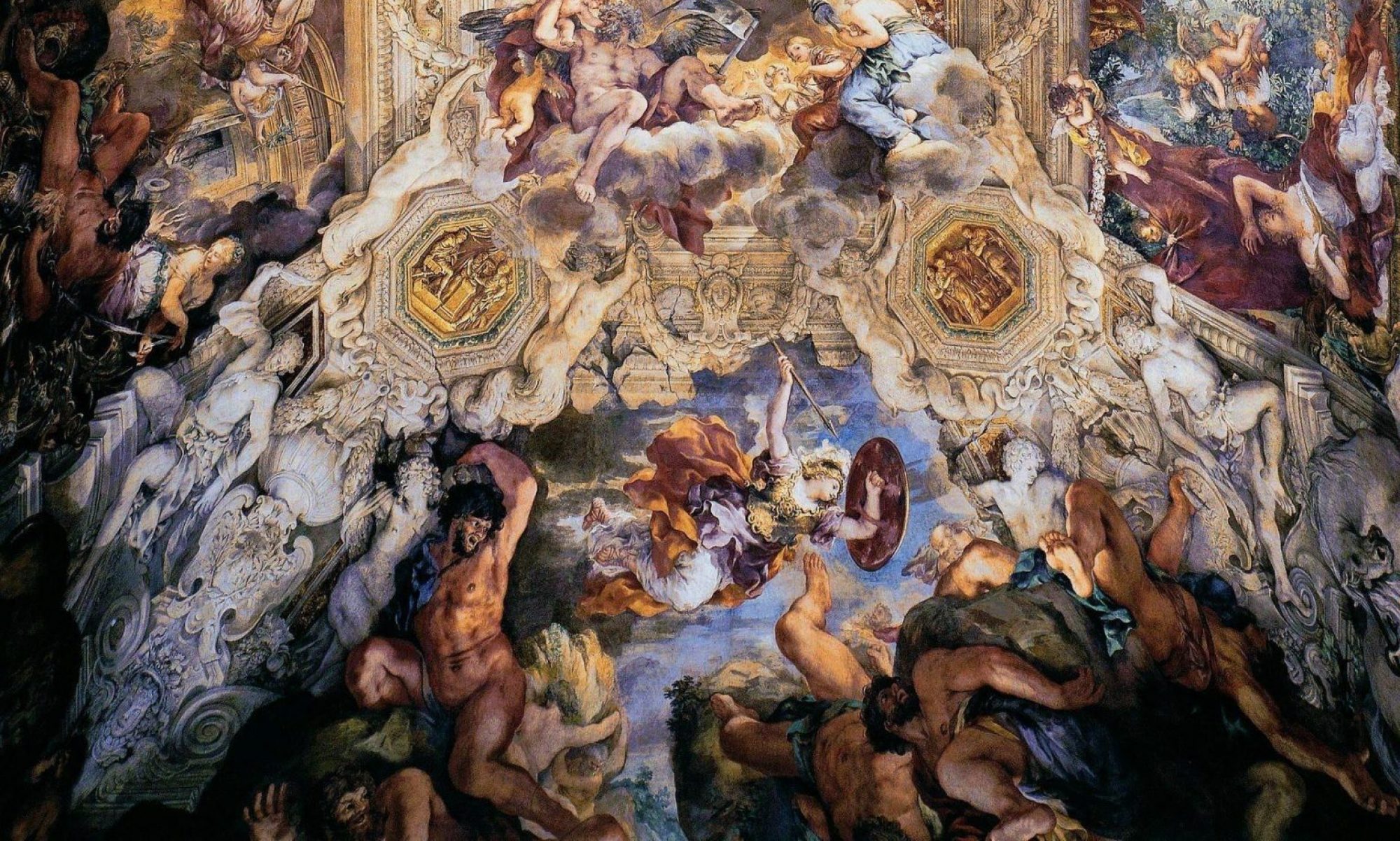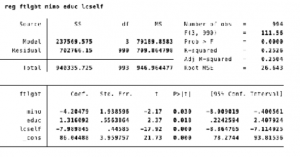 Death and the Fool – one of the most profound pieces of German literature that still sits vividly in my mind years after I first encountered it. It beautifully brings together all aspects of present, past, and future. To say I love this piece is an understatement. You can read the full play here: https://babel.hathitrust.org/cgi/pt?id=chi.12463722&view=1up&seq=9
Death and the Fool – one of the most profound pieces of German literature that still sits vividly in my mind years after I first encountered it. It beautifully brings together all aspects of present, past, and future. To say I love this piece is an understatement. You can read the full play here: https://babel.hathitrust.org/cgi/pt?id=chi.12463722&view=1up&seq=9
The desire for existential meaning is a recurring theme in German literature during the eighteenth century. In Death and the Fool, Hugo von Hofmannsthal utilizes contrasting notions of life and death to further illustrate the universal human desire for meaning and fulfillment. Through subtle references to Nietzschean philosophy, the play addresses the paradox of pre-existence and the inevitable demise all humans face, while simultaneously serving as a critique of the aestheticism movement of the late eighteenth century. In this essay, I argue Hofmannsthal utilizes the dichotomy of life and death to conclude the necessity of forgetfulness in escaping simultaneous pre-existence in the realms of past and future.
My scope of analysis focuses primarily on Claudio’s internal dilemma, rather than that of other characters within the play. Firstly, I explore Hofmannsthal’s contrasting conceptions of “inside” and “outside” within the play, rendering further analysis of Claudio’s morbid self-detachment and inability to live authentically in the present. Secondly, I offer a reading of the play in reference to Nietzsche’s philosophy, and consequently deduce the inability to forget as a primary factor of Claudio’s deep sorrow. Lastly, I derive parallels between Hofmannsthal’s work and the philosophy of Martin Heidegger, thus revealing the underlying irony and paradox of Claudio’s life through death.
The beginning of Claudio’s monologue consists of his internal longing for what is out of reach. He vividly describes the “lustrous meadows” and “wild morning wind” while describing nature as “the spring of all desires” (Hofmannsthal, 46). As Claudio fantasizes about a lifestyle beyond his attainment, he exclaims that he is “filled with longing” by the “purpose and blessing” spread before him (46). His objectification of the nomadic mountain people allows him to romanticise what is beyond reach. This is evident as he exclaims how “near to [his] heart’s desire” these people have become (47). Hofmannsthal’s emphasis on Claudio’s longing for the outside creates a dichotomous parallel with the concept of an inside and outside. Martens argues Claudio’s placement at his window is indicative of the profound emotional border between him and the outside, which further proves Claudio’s innate discontent with his enclosure (35). His name itself is derived from the Latin word “claudere” meaning ‘to close’, as synonymous to his spatial distance from what is beyond. This is evident as Claudio’s secluded home establishes a physical barrier between him and the outside world.
A deeper reading of the text uncovers the dichotomy Claudio faces between the inside and outside realms as analogous to the human condition of constantly living in the past or future. Similar to the outside Claudio longs for, the characterization and objectification of life itself acts as a barrier to living fully in the present moment. The conception of pre-existence “renders past and present mysteriously simultaneous” therefore overcoming time (Bennett, 71). Claudio experiences life solely through past and future as supported by his claim that as “a thousand resemblances rushed/ To the mind…all happiness [is] gone” (Hofmannsthal, 47). He claims he knows nothing of human life as he merely “stood in the midst of it” and at best has merely comprehended it (47). By experiencing life solely through past memory or mere anticipation of the future, Claudio is trapped in an existentialism that is only reflective of human experience. It is “only afterwards the mind seeks out the breath of life” which further illustrates the desire for raw experience only after it has been lived (49). By existing in an abyss of past and future, Claudio is denying himself authentic participation in life, thus resulting in his intellectual detachment (Bennett, 72). He describes this entrapment from unadulterated existence as analogous to standing paralyzed “before the trellised gates of life” overpowered by “a curse which does not end” (Hofmannsthal, 56).
While Claudio understands there exists a world and a way of life different from the one he experienced, the awareness is not sufficient. Claudio’s romantic longing for emotional participation in life is not fulfilled by sheer realization of his condition. He exclaims that he has comprehended life, and thus understands his position clearly (47). Therefore, he is not a fool in the conventional sense. In fact, Siefken argues that it is his thorough reflection of existence that has left Claudio “an over aware outsider” where reality was “destroyed through this process of analysis” (80). Hence, this renders the thesis that Hofmannsthal is not asking the reader to simply become aware of their pre-existence, but to rather to embrace a central concept of forgetting, as derived from Nietzsche’s critique of the ‘historical man’.
Hofmannsthal’s play was released nearly ten years after Nietzsche’s The Madman, where he makes the famous claim that “God is dead” (16). The anti-Enlightenment movement of the eighteenth century, as championed by Frederich Nietzsche, began a wave of anti-foundational sentiment throughout Europe that exposed the hollow reality of human life. Hofmannsthal’s play showcases the universal desire for meaning and purpose in a fundamentally anti-foundational world. Claudio’s excessive self-awareness and analytical nature removes the spark from life as he enters a psychological dread where he only desires what he cannot have. According to Nietzsche, for a man to live authentically, he must possess the ability to copiously forget. In On the Uses and Disadvantages of History for Life he exclaims:
“He who cannot sink down on the threshold of the moment and forget all the past, who cannot stand balanced like a goddess of victory without growing dizzy and afraid, will never know what happiness is…. Forgetting is essential to action of any kind, everything organic” (9).
Similar to Claudio, Nietzsche’s ‘historical man’ possesses no trace of the power to forget. Nietzsche asserts that “without forgetting it is quite impossible to live at all” (10). Throughout his monologue, Claudio frequently refers to his “ever restless reason, unable to forget” (Hofmannsthal, 47). Claudio questions “What should [he] know of human life?” if he has “never lost [himself] to it” or if he was “never wholly unaware” (49). Evidently, Claudio is unable to forget. He claims his spirit is “buried deep, so sealed from consciousness…. Bringing only the stale flurry of remembrance” (64). In order to live life usefully and vigorously, one must therefore possess the ability to copiously forget the past and exist in the present. Through the process of forgetting, one deliberately escapes living life in a blank present – in absence between memory and anticipation (Martens, 35). Hofmannsthal’s usage of juxtaposition reemerges as Claudio is condemned to “live without knowing or to know without living” (36). I conclude, therefore, that it is Claudio’s restless reason and inability to forget that primarily contributes to his deep unhappiness.
Lastly, I focus on the play’s emphasis on life and death. Death is not experienced or created instantly, but is rather created in every moment of self-conscious existence. Claudio perpetually exudes this reality as he exclaims he “saw the sun with lifeless eyes” and “heard no longer but with lifeless ears” (Hofmannsthal, 49). Specifically, the sun represents life, energy and rebirth. For Claudio to see the sun with lifeless eyes establishes the ever-present obstacle between life and death. His active characterization of life itself causes his senses to be paralyzed and for a “senseless nameless fear” to take control of him (54). Hence, it is demonstrated that Claudio’s morbid self-detachment robs him from genuine human experience and life.
As Death encompasses Claudio, he exclaims “Since my life was death, then Death, be my life!” (Hofmannsthal, 65) This speaks to a greater philosophical ideology, as championed by Heidegger, that reflection upon death is necessary in enabling humans to live fully. Similar to Nietzschean conceptions of death, Heidegger asserts that man becomes aware of his finitude only through comprehending the reality of death. Thus, in order to live as an authentic human being, it is critical to constantly project life onto the horizon of death, which Heidegger famously labels “being towards death.” Since human existence is finite, Claudio’s confrontation with death is what allows for authenticity as he attempts to create meaning out of it. Claudio goes as far as to claim that he finally experienced life in his one-hour encounter with death in comparison to his entire life. Subsequent to his death, he exclaims that “For only as I die I feel that I am” (65).
The idea of death overwhelms Claudio “with a sense of wonder at existence” as he is “suspended between the infinite and finite aspects” of human nature (Bennett, 84). He is confronted with the awareness of death; but death, along with “an astonishing and terrifying knowledge of the unfoundedness of existence in a gaping abyss of truth”, enables Claudio to commit to human life (85). Hofmannsthal’s satire lies within the irony that it is through the process of death that Claudio is able to finally feel “alive.” The excruciating fear Claudio experiences upon encountering death doesn’t allow ample time for him to fully analyze the situation, therefore causing him to experience it.
Thus, it is through Claudio’s final encounter with death that Hofmannsthal grasps at the paradoxical human condition. Death itself is deeply embedded into the concept of life, and with each moment of existence, a paralleled presence of death persists. Consequently, death as a reality cannot merely be “understood” as an idea, but eternally endures as a mystery – a country from “which no traveler, once he has truly entered it, ever returns” (Bennett, 73). The reader, therefore is confronted with the recognition that a shallow understanding of death is utterly useless (74). Hofmannsthal’s characterization of death offers a medium of understanding to the reader, however, it also insists that true understanding is impossible at a theoretical level. It is precisely this dilemma where the unsolvable mystery of death – along with the cyclical labyrinth of human existence – is revealed within Hofmannsthal’s work.
In conclusion, Hugo von Hofmannsthal’s dichotomous juxtaposition of life and death, inside and outside, and past and future furthers a deeper understanding of Claudio’s intellectual detachment from life. The play addresses the paradoxical reality of life towards death, whilst revealing the hollow reality of human existence. I have presented an analysis of the primary irony between life and death, however, further literary discourse may reveal juxtaposition evident between simplicity and aestheticism, or between Claudio’s past ghosts (mother, former lover and friend) and Claudio himself (Hofmannsthal, 63). By blurring the lines between life and death, past and present, inside and outside, Hofmannsthal emphasizes the Nietzschean theory of possessing the ability to forget in order to fully experience the moment. It is presence of careless forgetfulness which allow one to live fully with no prior attachment to the past or future. Additionally, the dichotomy of an inside and outside realm, where Claudio is unable to attain what is ‘outside’ his reach, further highlights his enduring romanticization of genuine human experience. It is through the protagonist’s encounter with death where he realizes the value of the life he actively rejected. Claudio’s tragedy subsists as he grasps at life’s impermanence only when it has become far too late. Upon the climax of Claudio’s dying reflection, he exclaims “So now, in an excess of feeling, I seem to awake / From life’s dream in death’s wakefulness” (65).
Bibliography
Bennett, Benjamin. Hugo Von Hofmannsthal: The Theaters of Consciousness. Cambridge University Press, 1988.
Heidegger, M., Macquarrie, J., & Robinson, E. Being and time. Malden, MA: Blackwell. 1962.
Hofmannsthal, Hugo Von. Der Tor Und Der Tod (Death and the Fool). 1893. Print.
Martens, Lorna. Shadow lines: Austrian literature from Freud to Kafka. U of Nebraska Press, 1996.
Nietzsche, Friedrich Wilhelm. The Gay Science; with a Prelude in Rhymes and an Appendix of Songs. New York: Vintage Books, 1974.
Nietzsche, Friedrich Wilhelm. “On the Uses and Disadvantages of History for Life.” Cambridge University Press, Cambridge, 1997.
Siefken, Hinrich. “Hugo Von Hofmannsthal’s ‘Der Tor Und Der Tod’the Paradox Of The ‘Nahe Ferne’.” German Life and Letters 24.1 1970.

